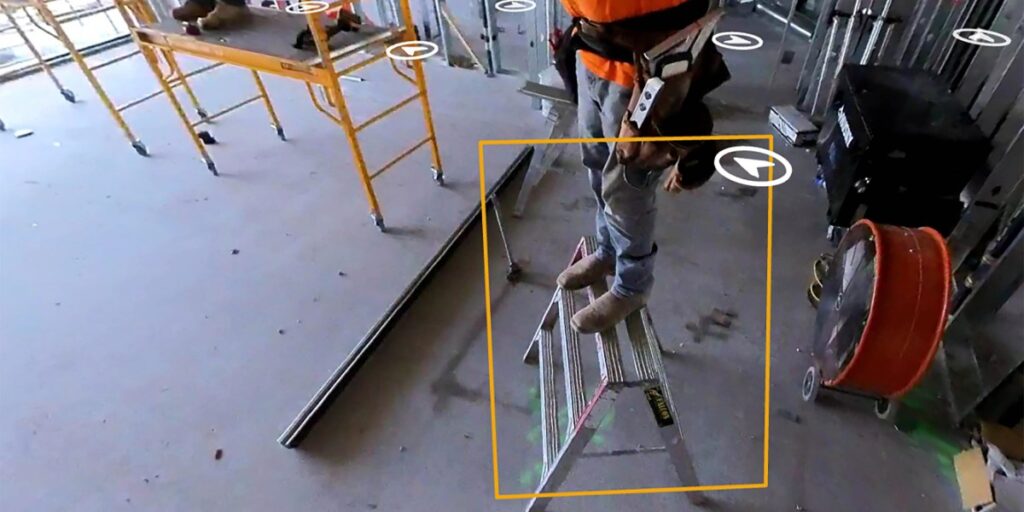More than 1,000 construction workers lose their lives on the job each year in the United States, making the construction sector the most hazardous industry for fatal slips, trips, and falls. A groundbreaking AI tool, Safety AI, is poised to transform this grim reality. Developed by Philip Lorenzo, Safety AI analyzes daily progress on construction sites and flags conditions that violate Occupational Safety and Health Administration (OSHA) regulations, boasting a claimed 95% accuracy rate.
The introduction of Safety AI marks a significant advancement in construction safety technology. Lorenzo asserts that this tool is the first among several emerging AI-driven safety solutions to leverage generative AI for identifying safety violations. However, the 95% success rate also indicates that Safety AI is not infallible, highlighting the ongoing challenges in achieving perfect safety oversight.
AI’s Role in Enhancing Construction Safety
The announcement of Safety AI comes at a critical time for the construction industry, which has long struggled with maintaining safe working conditions. Traditional safety measures have often fallen short, leading to persistent high fatality rates. By integrating AI into safety protocols, construction sites can benefit from real-time analysis and proactive risk management.
According to industry experts, the integration of AI in construction safety could lead to a paradigm shift. “AI tools like Safety AI have the potential to significantly reduce workplace accidents by providing timely alerts and actionable insights,” says Dr. Emily Chen, a professor of construction engineering at Stanford University. “This technology can complement human oversight, ensuring a safer working environment.”
Challenges and Limitations
Despite its promising capabilities, Safety AI is not without its limitations. The tool’s reliance on data accuracy and the need for continuous updates to align with evolving safety standards are key challenges. Moreover, the effectiveness of AI solutions is contingent on the quality of the underlying data, which can vary across different construction sites.
Lorenzo acknowledges these challenges, stating, “While Safety AI is a powerful tool, it is essential for companies to maintain robust data collection practices and regularly update the system to ensure optimal performance.”
Implications for the Construction Industry
The deployment of AI tools like Safety AI could have far-reaching implications for the construction industry. By reducing the incidence of workplace accidents, companies can not only safeguard their workforce but also enhance operational efficiency and reduce liability costs.
Furthermore, the adoption of AI-driven safety solutions could influence regulatory frameworks. As AI becomes more prevalent, regulatory bodies may need to adapt their guidelines to incorporate new technologies, ensuring that safety standards keep pace with technological advancements.
“The construction industry is at a crossroads, with AI offering a path towards safer and more efficient operations. Embracing these technologies could redefine industry standards,” notes John Ramirez, CEO of a leading construction firm.
Looking Ahead: The Future of AI in Construction
As the construction industry continues to evolve, the role of AI in enhancing safety measures is likely to expand. Emerging technologies, such as machine learning and computer vision, could further augment AI capabilities, providing even more comprehensive safety solutions.
Experts predict that the integration of AI will not only improve safety outcomes but also drive innovation in construction practices. By leveraging AI, companies can optimize project timelines, reduce costs, and enhance overall productivity.
In conclusion, while Safety AI represents a significant step forward in construction safety, it is part of a broader trend towards digital transformation in the industry. As companies embrace AI-driven solutions, the potential for safer and more efficient construction sites becomes increasingly attainable.
About The Author
 Trump Misleads Again on Gas Prices, Claims Five States at $1.99
Trump Misleads Again on Gas Prices, Claims Five States at $1.99 iOS 26 Introduces Seamless Wi-Fi Syncing Across Apple Devices
iOS 26 Introduces Seamless Wi-Fi Syncing Across Apple Devices Microsoft Announces 9,000 Job Cuts Amid Strategic Restructuring
Microsoft Announces 9,000 Job Cuts Amid Strategic Restructuring Apple’s New Patent Could Revolutionize Camera Sensor Technology
Apple’s New Patent Could Revolutionize Camera Sensor Technology Revolutionizing Hospital Efficiency: Agentic AI’s Role in Healthcare
Revolutionizing Hospital Efficiency: Agentic AI’s Role in Healthcare